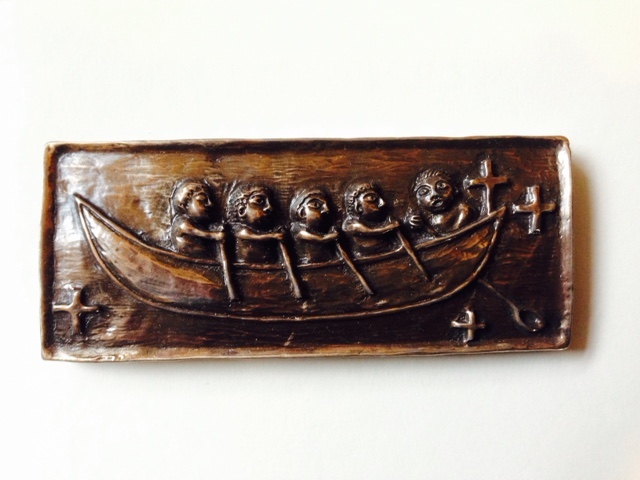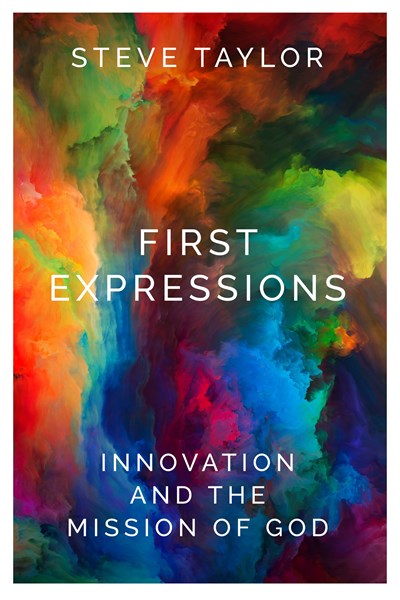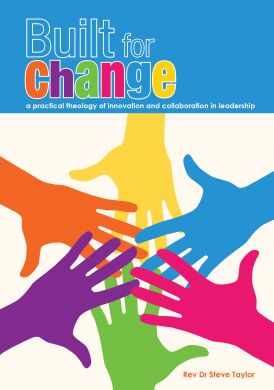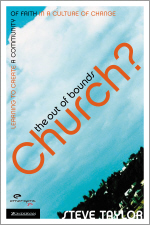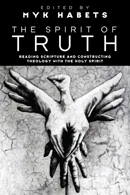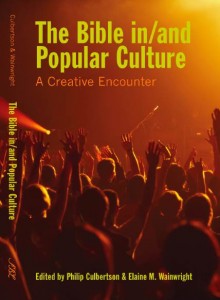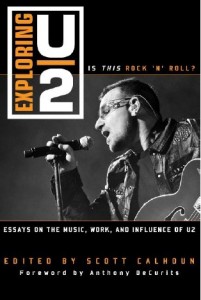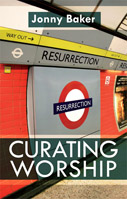Saturday, October 18, 2025
listening capital defined
I define listening capital as an asset that results from being fully present in high-quality listening. Investing in listening capital has benefits that are immediate and long term. It builds trust, encourages partnerships and cultivates capacity for risk.
The possibility of capital being more than simply economic is present in a definition of capital as “heterogeneous resource combinations” (Endres & Harper, 2020: 161). They observe that capital includes land, natural resources, financial capital, human capabilities and other intangibles.
While capital is often interpreted in monetary terms, the concept of social capital has received increasing attention within social economy research (Lewis & Chamlee Wright, 2008). Chris Woods summarises social capital as “bundles of knowledge obtained through social interactions, such as networking, [that] creates norms of trust, reciprocity, and respect” (Woods, 2025: 13).
High-quality listening strengthens connections between speaker and listener. Community relationships are intensified as listening cultivates a positive emotional climate and mutual understanding (Kluger & Mizrahi, 2023). High-quality listening results in a sense of togetherness and increased interpersonal disclosure (Kluger & Itzchakov, 2022). The elements of high-quality listening include attention, comprehension and intention. High quality listening results in feelings of belonging, connection, and acceptance and thus contributes to social connection and human flourishing.
Hence listening capital is a social asset that grows as listeners invest in high-quality listening. Investing in listening capital becomes an important element in leading through change.
The concept of listening capital and the benefits for change management and community development emerge from reflection on my research. This includes my John Templeton funded research into the Social Impacts of Listening Practices in Religious Organisations. It also includes impact evaluation research I have done for organisations in Australia and New Zealand, including ethnographic observation of consultancy processes and interviews with participants about their experiences.
Across these different research projects it is clear that being listened to builds trust and opens people to consider different perspectives and new insights.
Monday, September 29, 2025
Listening in ministry and mission
It was lots of fun over this weekend speaking online to ordination candidates at Cuddesdon, England. We lived as a family at Cuddesdon for a Northern Hemisphere Christmas experience in 2011. So it was a delight to be able to offer something back to a place that had kept us warm and snug during several snow snaps.
I was asked to speak for two 90 minute sessions. One session was on listening in ministry. Another session was on listening in mission. It was fun to work over zoom and to invite participants into various listening experiences all while I was projected on screen. To help with engagement, one session involved lectio divina and sharing in pairs (the photo was taken while participants were sharing in pairs). The other session involved two case studies with group work.
The sessions were based on my cross-training research into the social impact of shared spiritual practices. It has been really helpful to think about the implications of the research for congregational leaders. I am 11 months into what is a 12 month project. So to be asked to think about the “so what” was perfect timing really.
It was also an integrative and redemptive experience. With Mark Johnston, during 2015-2020, I had developed and taught a course called Listening in Mission. So it was a rich experience five years later to return to those notes and think about how my current research into shared spiritual practices might inform and expand my thinking.
Thanks Cuddesdon for inviting me. Thanks Psychology Cross-Training Fellowship for the current research opportunities.
Wednesday, March 05, 2025
Listening with Purpose: A Theologian Reflects on the Interface between Theology and Psychology
I am privileged to be building bridges between theology and psychology as a Psychology Cross-Training Fellowship Programme for Theologians Fellow. This 16 month interdisciplinary programme is run by the University of Birmingham and is funded by John Templeton. It involves 3 intensives in Birmingham, monthly online coaching and mentoring. It also funds a small part-time research project over 12 months – in my case researching the social impact of religious practices. I wrote about the interdisciplinary experience a few weeks ago and the Cross-Training blog picked it up. My blogpost was prompted by a post from my mentor, Dr Guy Itzchakov, who researches empathic and non-judgmental listening at the University of Haifa. I’m cross-posting what I wrote for the Cross-Training blog here:
A few weeks ago, I cycled over a recently completed bridge. The modern two-lane structure, with eye-catching visual features, spans Mata-au, the South Island’s largest river. A 136-year-old single-lane bridge remains, repurposed for cycling and walking.
The two bridges got me thinking about the nature of interdisciplinary research. The historic single-lane bridge used traffic lights to regulate traffic flow. Each side took turns. Crossing meant waiting for cars from the other side to hurtle on past. In contrast, the recently built two-lane bridge allows both sides to move. The result is improved safety and new traffic flows.
Building bridges is the aim of the Psychology Cross-training Fellowship Program for Theologians. The Fellowship feels like the making of a modern two-lane bridge. Rather than separate disciplines hurtling past each other, the Fellowship invites the fields of psychology and theology to create new flows of traffic by exploring shared interfaces.
Listening
One shared interface between psychology and theology is listening. Psychology has explored how high-quality listening improves social connection. The intentional use of two ears builds community and enhances human flourishing. Research has outlined the essential roles of attention, comprehension and intention in high-quality listening.
Theology has commended listening as a spiritual imperative, a way of responding to God’s command to “listen” at Jesus’s transfiguration (see, for example, Matthew 17:5). Listening is then embedded in a range of spiritual practices.
But, like cars waiting to cross a one-lane bridge, research in psychology and theology has had little impact on the inquiry of the other. In a recent blog post, Professor Guy Itzchakov reflected on the interdisciplinary possibilities for listening between psychology and theology. As a psychologist in the science of listening, he utilised themes of connection, empathy, and loneliness to suggest that listening is a practice that “transcends disciplinary boundaries.”
Psychologists like Dr Itzchakov conduct research at one end of the bridge. As a practical theologian, I start at the bridge’s other end. At my end of the bridge, while listening to God is considered important, and listening is taught in practical ministry courses, empirical research into the social impact of religious listening practices is rare. What might building bridges with psychology contribute to theology? How might psychological theories of listening as attention, comprehension, and intention, illuminate sacred religious texts?
Attention
Attention involves being fully present to a speaker without internal and external distractions. Humans have a unique ability to filter sounds. We can listen closely in a noisy café or hear the voice of a loved one in a throng of people.
Attention provides ways to understand silence as a Christian practice. Christian services of worship often include silence as an element of corporate prayer or in hearing Scripture read aloud.
Silence is thus an antecedent or a precondition of quality listening. One cannot pay attention if one is speaking. Through the lens of attention, the religious practice of silence can be understood as similar to warming up before exercise. The practice of silence involves stretching the listening muscles in preparation for enhancing social connection.
Comprehension
Comprehension refers to how listeners signal they understand the speaker. Summarising what I think I have heard from another demonstrates listening and deepens our sharing.
The lens of comprehension illuminates the practice of lectio divina, particularly in group settings. Latin for divine reading, lectio divina encourages listening to sacred texts. When used in groups, there is often a time of sharing what individuals are hearing. This sharing deepens comprehension. Sometimes, the interpretations of others in the group provide insight and deepen connection. At other times, diverse interpretations or provocative questions raise hermeneutical questions and encourage respect across differences.
Intention
Intention describes how the speaker experiences a listener. High-quality listening involves communicating acceptance, empathy, and curiosity. Sometimes, this is verbal, with words of agreement. At other times, it is through back-channel behaviours like body posture or a nod.
In The Spiritual Disciplines Handbook, Adele Calhoun introduces the practice of slowing and describes its use at the start of a meeting: “I want to give you a moment of silence to leave behind what you are coming from. I want us to be present to each other in our discussion together. Take some deep breaths and relax. We will start in one minute” (2015, 90). Slowing is a practice that signals an intention to fully present.
Through the lens of attention, slowing, like silence, is like a warming-up exercise. The intention of being “present to each other” enhances the possibility of high-quality listening.
Hence, psychology illuminates the social dynamics embedded in spiritual practices. Attention, comprehension and intention provide ways to think about the role of listening in religious practices.
The “I am” as a Listener
Attention, comprehension and intention can also be used to analyse theologies of revelation. A particularly striking description of God occurs in Exodus 3, a narrative of great significance to the religious traditions of Judaism, Christianity and Islam. God is a listener in the account of Moses and the burning bush. The “I am” pays attention as they hear the cries of the suffering in Egypt (3:7). The “I am” communicates comprehension as they send Moses to respond to human misery (3:10). The “I am” signals intention by instructing Moses to take off his sandals as an observable listening posture (3:5).
The narrative in Exodus also describes what it means for humans to listen. Moses pays attention by choosing to hide his face (3:6). His comprehension is deepened because he asks multiple questions (3:11-13). His intention is signalled as he returns to the suffering community from which he had earlier fled (4:29).
Moses’s behaviour can guide religious practice. The Exodus narrative encourages questioning the Divine and choosing solidarity with the suffering as a way of service. Ecclesiologically, the church glimpses ecclesia discens and the behaviours that mark a learning community.
Attention, comprehension and intention illuminate Moses encounter with “I am.” For the Abrahamic religious traditions, listening is defined, not as a one-sided monologue but as a co-creative movement toward solidarity with the suffering.
Conclusion: Listening as a Theological and Psychological Practice
Theology has much to learn from psychology. Attention, comprehension, and intention illuminate the social dynamics embedded in spiritual practices and provide ways to analyse theologies of revelation. As a practical theologian, I am finding practical and intellectual, individual and communal benefits in building a two-lane bridge with psychology.
Friday, January 24, 2025
colours and community building
Today was the first church council meeting of the year. By way of devotion, as Chair, I took along a box of different coloured pens. Placing the pens in the middle of the group grabbed attention and created curiousity. A perfect way to begin.
“What was the colour of your Christmas,” I asked? “What was the colour of your summer?” Folk chose colours. “And if you want to test your colours, feel free,” I then said, as I handed around small pieces of paper.
After a few minutes of choosing and colouring, we shared with each other about the colours we had each chosen.
It worked splendidly. A real depth of sharing. New insights about each others realities. Greater awareness of how we could pray and support each other.
Then some questions about what being good news might mean among us. What if the range of colours among us also connects with the experience of folk in the community? What does the range of colours mean for how we preach and care as we move toward Christmas in 2025?
And so a prayer as the meeting began, that our work as a council would engage the full reality of the colours among us and the community in which we are part.
Choosing colours was a simple exercise that resulted in sharing of stories and supportive listening. Choosing colours builds healthy teams.
Thursday, February 09, 2023
the role of people and communities on the call to ministry
There is an excellent article on how social influences shape the call to ministry by Erin Johnston and David Eagle in the Journal for the Scientific Study of Religion.
“Expanding the Horizontal Call: A Typology of Social Influences on the Call to Ministry,” Erin Johnston and David Eagle, (2023), Expanding the Horizontal Call: A Typology of Social Influence on the Call to Ministry. Journal for the Scientific Study of Religion. DOI 10.1111/jssr.12816
While call has historically been seen as an interaction between God and the person called, their research demonstrates how call is socially structured. Theologically, call is thus understood as an embodied experience, shaped by relationships and the ways churches are socially structured, particularly in gender, ethnicity and participation.
Johnston and Eagle interviewed 36 first-year seminary students training for ministry. In the stories of call, six typical social others who play a formative role in the call to ministry were identified. These social others act as instigators, exemplars, interpreters, affirmers, challengers and co-discerners. Without social interactions, “a call can not emerge or be meaningfully enacted” (2). The research also examined differences in the social shaping of call by gender. Men are more likely to describe experiences of affirmers and exemplars, while women are more likely to have challengers and interpreters.
As I read it, I spotted four implications for churches interested in developing leaders:
- Clergy are the most commonly cited source of influence, mentioned by 58% of participants. They play significant roles as affirmers, co-discerners and examplars. Practically, helping clergy understand what good practice in these different social interactions look like would be beneficial.
- Gender of clergy. The research showed that gender-matched exemplars are particularly influential – seeing a woman in a position of religious leader can evoke and solidify a personal call. “Given that the number of women in congregational ministry remains relatively low and barriers to ordination and leadership remain high, women are less likely to interact with gender-matched exemplars and as a result, may be less likely to consider ministry as a potential vocational path.” (10) Practically, ongoing commitments to removing barriers for women and enhancing the visibility of women in leadership in religious communities is needed.
- Participation. Most of the participants were called “during a period of deepening involvement in a community of faith” (15). Practically, providing ways for people to participate and get involved are essential.
- Ethnicity. The data was from the US and in that context, more social influences were reported by Black respondents than White respondents. This requires further reflection. The article suggested this might be related to the denominations from which participants came. However, it might also be related to how different cultures nurture identity and develop leadership across generations.
A great piece of research, that has theological and ministry implications.
Friday, February 25, 2022
making endings visible
Part of my current life includes research projects for industry partners. Organisations have questions about their future and I set about finding ways to explore those questions. I conduct feasibility studies, undertake co-design or interview people for reviews. It’s the type of work I love – in rapidly changing times, finding creative ways to help organisations clarify their futures.
One of the realities of this work is that endings are fuzzy. Let me explain.
- As a project ends, I write a report.
- This is often sent to a key individual, for fact-checking. They need time to digest.
- Often there is a follow-up meeting, for them to clarify the report.
- Sometimes there are changes made.
- Next the report is circulated to a group. They again need time to digest.
- Often there is a meeting with that group, during which I present a brief summary and respond to questions.
- After I leave, the meeting continues with decisions needing to be made. I often offer to conduct other work outside, in case they have a specific question. Sometimes this offer is accepted, other times not.
- Sometimes I found out after the meeting what happened after, other times not.
- Sometimes the decisions made include asking for more work from me, for example, conversations with those impacted by the review or preparing a public statement. Other times not.
So the endings are fuzzy. There is the adrenaline of the final draft, the finished report, the meeting. But when is the project ended? When do I actually celebrate a job I consider well done?
To help with fuzzy endings, I’ve taken to making the project personally visible in other ways. This involves going looking for an object, generally in a second-hand shop, that symbolises the project. It might be a pottery cup, a handmade brass jug, or a clay person. Ideally, it is cheap. Ideally, it is whimsical. Ideally, it captures something of the project. Here is a recent project symbol.
 I like the unique handmadeness of this brass object. I like the slender fragility, how it was small in size, yet graceful in shape. The object is made for pouring and as I brought it, I prayed that the mission I was researching would indeed find ways to pour out grace and love for community.
I like the unique handmadeness of this brass object. I like the slender fragility, how it was small in size, yet graceful in shape. The object is made for pouring and as I brought it, I prayed that the mission I was researching would indeed find ways to pour out grace and love for community.
I brought this around 3 February, the day I submitted a 23 page, 10,000-word review, to a funder. I scoped the project and wrote a brief in early October. The project was commissioned in mid-October, projected to require 11 days of work. Over the next 4 months, in between a range of other tasks, I interviewed 9 people, initiated an online participant survey and prepared an annotated bibliography summarising current best practices. I then spoke to the report on 24 February, responding for an hour to questions from the funding committee.
This object now sits on my desk. It reminds me of work done – the craft of interviewing, the skill of question selection, the creating of safe space in caring for participants, the organising of words to tell a story that is contextually located, the developing of recommendations to help sift future possibilities. It invites me to keep praying for the project. It feels good to make a project visible.
Thursday, August 19, 2021
the seasons of research
 Today I’m bundling up a pile of research, as another project is sent to a funder. The yellow notebook on the left-hand side is my field notes for this season of the project, some 280 pages from interviews and conversations. The yellow notebook on the right-hand side is untouched. It expresses my sense that the project is warmly welcomed by stakeholders, my hope that the funders will agree to our next step plan and that I might start another season of research.
Today I’m bundling up a pile of research, as another project is sent to a funder. The yellow notebook on the left-hand side is my field notes for this season of the project, some 280 pages from interviews and conversations. The yellow notebook on the right-hand side is untouched. It expresses my sense that the project is warmly welcomed by stakeholders, my hope that the funders will agree to our next step plan and that I might start another season of research.
This season of the project has been co-design, in which diverse voices across a denomination have shared their reflections on a proposed project. It’s potentially a far-reaching and significant investment in theological education, ministry training and formation, across multiple cultures. Hence the need for co-design. Over the last 6 months, there has been some 40 listening interactions, to around 150 people. The result is a report of some 12,000 words, spread over 26 pages, weaving dreams, realities, spirituality and wisdom. The funders met next week to decide next steps.
There has been some significant imaginative scholarship in this particular season. There has been the use of lectio divina as a research tool. There has been the use of a prayer as a way to code what is being heard. On Monday I ideated with a research colleague a possible methodology journal article, emerging from the research design invited by the project.
While the funders read and reflect, I clear the desk, boxing up all the work. I find myself thankful, for being part of a wonderful bi-cultural research team, for the richness of spaces in which I’ve been privileged to listen, and for the creativity possible in research. I find myself excited, at what might happen if I am able to open that shiny, fresh notebook on the right.
Tuesday, August 10, 2021
Coding and a prayer
I’m back coding this week. Over this year, I’ve been working with a colleague on a co-design that might discern the future of theological education and formation for a denomination. To date in this particular project, we’ve conducted 40 interactions with around 150 people, inviting their reflections on what the actual project could look like.
With an interim report due to the funders later this month, this week we’re pausing interactions in order to write up findings to date. How to summarise what is now over 130 pages of data?
In beginning the project, the funders offered us a prayer. It was a prayer we prayed as we began every interaction, reading the funders words as a way of respecting their hopes and dreams, beginning with their voice in the project.
Loving and embracing God,
We affirm our guardianship of the precious gift of creation
We have a vision, we have courage, we have your guidance
Prayer of the Moana, by Archbishop Winston Halapua
So we are exploring using that prayer in the coding. It provides some words to shape what we could look for in the data – God, guardianship, vision, courage, guidance. It invites us to interact with our data, in light of those words
- Where is their God-talk and God-reflection?
- Where is their guardianship, a valuing of things that need to be tended and nurtured?
- Where is their vision, hopes for the future?
- Where is their courage, naming of reality and things that are difficult?
- Where is their guidance, insight into what is needed for the project to succeed?
 It also expects that God might actually be present in the co-design. It means that this week, amid the post-it notes and colour codes and white sheets of paper and pages of data, there is a spiritual attentiveness, not just to words said, but in wondering what God might be doing
It also expects that God might actually be present in the co-design. It means that this week, amid the post-it notes and colour codes and white sheets of paper and pages of data, there is a spiritual attentiveness, not just to words said, but in wondering what God might be doing
Monday, June 14, 2021
navigating leadership transitions in innovative communities
A few weeks ago, an email with a question – how to navigate changes in innovative communities?
navigating changes in first expressions from steve taylor on Vimeo.
A church pastor, who after reading my book First Expressions: Innovation and the Mission of God, asked if I could share some wisdom with their leadership team about navigating changes and transitions in innovative communities. The community were losing a key leader. New communities by nature have little experience of leadership transitions, so what wisdom could I share?
So I made a short video, reflecting on some of my own experiences (including my “have you grown” story). I also made a leadership transition bingo card, to reflect on innovation theologies and different church systems. I concluded with 3 tips drawn from research I did for First Expressions: Innovation and the Mission of God, lessons from 10 innovative communities I researched over an 11 year period
- storyforming
- flexibility
- situation awareness.
Resources – leadership transition bingo card

Wednesday, July 08, 2020
twenty-first-century ministry formation
One of my tasks over the last months has been to lead Faculty and interns in shifting a 9-day face to face intensive into a 10 -day online intensive. This has involved upskilling Faculty who have never before taught online and experimenting with ministry interns in new practices around online spiritual formation.
Today I worked through the intern evaluations, summarising the (de-identified) feedback on 13 areas of specific change made for this online intensive. This was the first step in order to be able to offer a report to the various governance and management bodies. As I finished the feedback, I found myself drafting some thoughts. They are very much draft, shaped as much by my ongoing reflection on the impact of COVID on the church in general (plus my recent work developing Bubble courses and Communities of Practice). As such, the words don’t belong so much in a block course governance report, but rather stand as a more general pondering about the future of ministry formation. Hence I note them here:
All new technology, whether a pen, the index of a book, a library catalogue or a learning management system, requires time to learn how best to utilise. How many of the skills that interns noted they were learning will, in fact, become essential ministry skills in the years ahead? Could it be that online learning needs to become an integral component of ministry formation? If so, then it will be essential that time is set aside for skill development. For example, sharing honestly and connecting socially in digital platforms, accessing online content and engaging in online spiritual disciplines. An education that integrates these dimensions will not only enhance the learning experience for all. It will also ensure a twenty-first-century citizen, in this case, an appropriately formed minister of the Word, able to participate in what God is up to, whether on or offline.
Monday, May 25, 2020
KCML Bubble courses: Lockdown special? Or the sign of a #newnormal?
A short piece I wrote for the Knox Centre for Ministry and leadership website, also cross posting it here.
‘Stick to your bubble’, the Prime Minister announced on Tuesday 24 March. In response to the first cases of community transmission of COVID-19 in Aotearoa, New Zealand was entering bubble time.
Bubbles can be beautiful, sparkling red, green and blue as sunlight touches their fragile surface. Equally, bubbles can be delicate, a thin film so easily broken.
Entering our bubbles, Aoteroa was forced into new ways of living, working and playing. Worshipping on lounge room sofas, running businesses from a kitchen table, learning from our laptop soon became the new normal.Wanting to resource the Presbyterian church during the lockdown, KCML offering “Bubble courses.” KCML Faculty with expertise in preaching, leadership and Christian formation went online during Level 3 to offer sixty minutes of evening input. How to preach in a pandemic? How to lead in change? How to build a community online?
For six evenings, ministers, session clerks, paid and voluntary church leaders, found themselves learning together online. New connections were made across diverse Presbyteries as lay and ordained were sent to online break rooms to share experiences.
Every Bubble course attracted between 30 to 45 participants. Sessions were recorded, and those unable to attend can access these through the KCML Living library.
While advertised to Presbyterians, the wonder of social media meant that participants were logging in from England and Australia, keen to learn from the calibre of Faculty at KCML.
“Thank you for allowing me to participate from ‘across the ditch’. This has been truly helpful already. The high-quality input and interactive nature are making it accessible and interesting.”
Each session was co-hosted, with social media strategist Tash McGill coming on board to welcome participants, provide technical support and enhance the conversation. Co-hosting was a way of modelling to churches ways to build online participation. Tash commented ”
As a specialist in digital transformation and online community, this was a venture into hope casting. The participation, active reflection and safety created demonstrated ways to build very present and real learning experiences in digital ways.”
This was new terrain for KCML Faculty. For Geoff New “What struck me was the deep level of trust and transparency. Participants engaged immediately, opening up to people they did not know. A college of preachers was created. Wonderful!”
For Steve Taylor, “It was wonderful to scan faces as people returned from online breakout small groups and see the range of people. Overseas ministers, Presbytery and local church leaders, LOM and NOM ministers were all learning and sharing together.”
The feedback from participants has been heartwarming. Words and phrases like “goldmine”, “excellent”, “stimulating” and phrases like “impressively well run”, “great service to the church”, “beautiful and interestingly presented” were used.
Is Bubble learning limited to a lockdown? Could online learning that is timely, thought provoking, conversational, engaging be part of a #newnormal for the Presbyterian church? The feedback certainly included requests for a sequel. One participant wrote
“I hope they can continue in some form – I think we need these to extend our “local church bubbles” to connect, interact and grow.”
KCML is seeking further feedback and working to discern future directions with the Leadership Subcommittee.
Steve Taylor
20 May 2020
Tuesday, April 28, 2020
Bubble courses: a KCML innovation
An educational experiment I’ve been working on for the last few weeks, seeking ways to facilitate learning and community in the context of a global pandemic.
During Level 3 in Aotearoa, Bubble courses provide input for leaders, elders, ministers and whole people of God. They are timely, conversational, engaging, thought-provoking.
- Geoff New The Practice of Preaching in a Pandemic – Thursday 30th April and Thursday May 7th
- Nikki Watkin Leading in change: conversations and creativity – Monday 4th May and Monday 11th May
- Steve Taylor – Building community and increasing participation online – Tuesday 5th May and Tuesday 12th May
7:30-8:30 pm (NZT) evenings. To register and get a zoom link, contact registrar@knoxcentre.ac.nz.
Tuesday, February 25, 2020
Faith in the boardroom chapter acceptance
My book chapter for Reimagining Faith & Management got a big tick from the editors today. It is a 7,000-word piece I have been working on for a few months, in the gaps around holidays, two block courses and some other writing on craftivism.
It was a quite out of the blue invitation in August of 2019 to consider being part of this international project. I kept wondering if I had bitten off more than I could chew. But it has been a wonderful opportunity to push forward my research into leadership and innovation in Built for change: A practical theology of innovation and collaboration and institutions and innovation in First Expressions: Innovation and the Mission of God
. In particular to draw on presentations from 3 years of the Lighthouse innovation incubators, along with further research into the Wisdom literature of Hebrew Scripture as a resource.
Chapter title: Faith in the boardroom: Seeking wisdom in governing for innovation
Abstract: This paper explores faith in the context of the boardroom. A notion of wisdom governance is developed in dialogue with Hebrew Scripture and contemporary governance research. The proposal is that faith resources can be utilised in ways accessible to pluralist contexts yet respectful of the particularities of diverse faith traditions. Governance practices are developed using verbs of serving, gardening, building, resourcing, risking and parenting. Two case studies clarify the nature of governance in innovation. The argument is that in conditions that require the balancing of risk and innovation, a wisdom governance that is trusted, engaging and connective is possible.
Keywords: governance, Wisdom literature, innovation, risk
The book – Reimagining Faith and Management: The Impact of Faith in the Workplace– is part of the Routledge Studies in Management, Organizations and Society series. . Dr Edwina Pio is the lead editor. She is New Zealand’s first Professor of Diversity and in 2019, was awarded the Te Rangi Hiroa Medal by the Royal Society Te Apārangi for her pioneering research in diversity, specifically, how the intersection of ethnicity, religion and gender is influenced by the world of work. So it is wonderful to have such a skilled researcher taking the lead in what is an interdisciplinary space that has quite some complexity.
The co-editors are Dr Robert Kilpatrick and Dr Timothy Pratt, whom I’ve kept in contact with since being in Baptist ministry together in the late 1990s and early 2000s. Little did any of us dream back then that we’d be writing in this space together! Each chapter will revolve around managerial concepts within which faith-based aspects will be woven. The twenty chapters will be written by contributors from around the globe, with publication either at the end of 2020 or early 2021.
Wednesday, October 24, 2018
cut to pieces – a challenging biblical text in the time of Jamal Khashoggi
As a KCML team, we gather weekly for a team meeting. Before we get down to our agenda, we share our comings and goings. We read Scripture, often the lectionary reading for that day.
The Gospel reading for today, from Luke is 12:39-48, is particularly challenging. I was tempted to skip it, but then realised how some of the worst parts actually sound so relevant. Take Luke 12:46 – The master of that servant will come on a day when he does not expect him and at an hour he is not aware of. He will cut him to pieces – a real doozy given the murder of Jamal Khashoggi, cut to pieces in a Turkish embassy. The violence of Biblical times is still with us in the 21st century.
So we decided to take up the challenge. We began with lectio divina. The Gospel reading was read twice. The first time we invited each to hear cynically. Where was the Word of the Lord in what jarred us? The second time we were invited to hear with wonder. Where was the Word of the Lord in what made us optimistic?
The discussion that resulted was rich and generous. We as KCML have been left – the optimistic reading – with the blessing of “food allowance at the proper time” (42). We have been blessed and yet, the cynical reading – we can “eat and drink and get drunk” (45) We talked about the temptations that we face – what it means for each of us, as a team and in our vocations, be faithful in this season.
Finally, I offered some thoughts from scholarship: from the helpful About Earth’s Child: An Ecological Listening to the Gospel of Luke the Earth Bible Commentary, from former colleague, Michael Trainor. It seeks to listen to Scripture through listening for ecology as an actor.
First, an endorsement of the double lectio approach – the cynical reading, followed by the optimistic reading – in the abundant cf selfish words:
Luke’s main point concerns an abundant and selfish possessiveness that creates disparity among one another and deflects the disciple from what is important: God. (189)
Second, in response to “Lord, are you telling this parable to us, or to everyone?” (41) The call not only to focus on our relationship with God, but with each other. We are in a very difficult season as KCML, our futures not currently in our hands. And so the abundance given to us by God needs to be shared among us, in our values as a team, the way we engage with each other.
The disciples are “to take care of each member of Jesus’ household with care and respect” (190)
A challenging text. A call to be human and treat other humans, with a generous dignity. Which actually says a lot to a world in which people are being cut to pieces; physically, politically and for profit.
